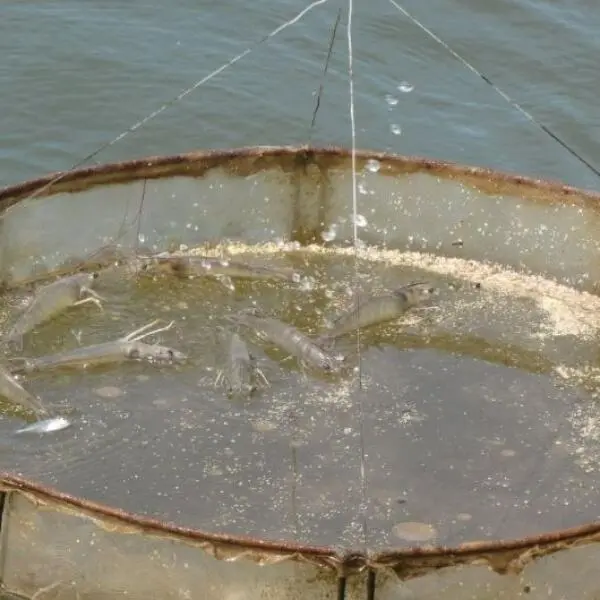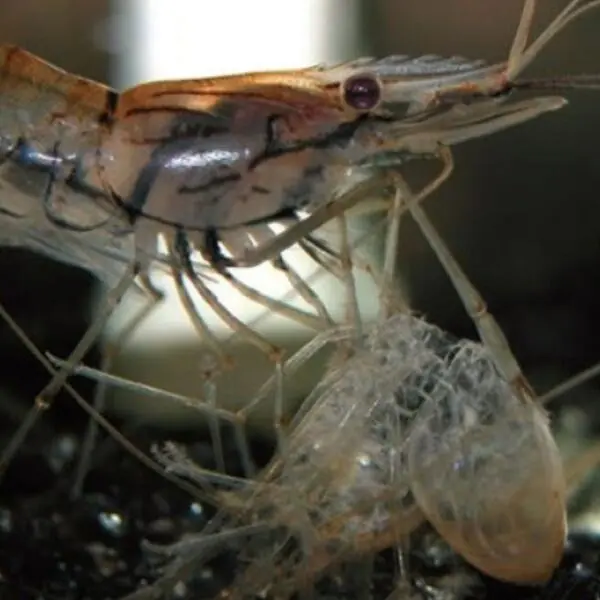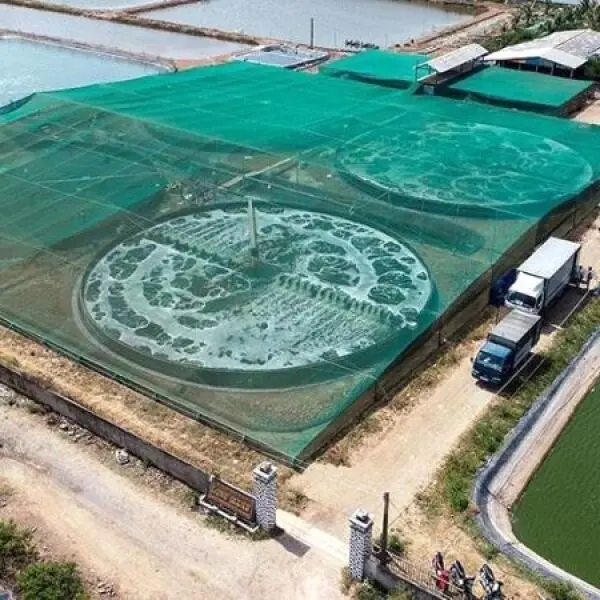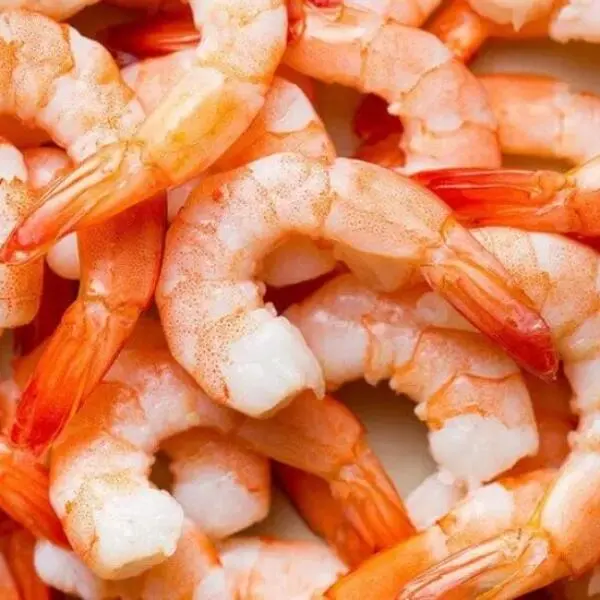
Shrimp cultivation has become an increasingly profitable sector due to rising global demand. However, maximizing shrimp growth requires understanding their life cycle and addressing factors that may hinder their development. This article explores the shrimp growth process, stages in the shrimp life cycle, and practical tips to accelerate shrimp growth effectively.
The Shrimp Life Cycle
The shrimp life cycle is a fascinating journey, from microscopic eggs to fully grown adults. Below, we outline the key stages of shrimp growth and development:
1. Eggs
Shrimp eggs are laid in oceanic waters with high salinity, where they sink to the ocean floor. These eggs are tiny, with a diameter of less than 1/64 inch, and mark the beginning of the shrimp growth journey.
2. Nauplius
The nauplius stage consists of five phases, starting with larvae approximately the size of the eggs. Nauplii are part of the oceanic plankton and have limited swimming abilities. They gradually grow during each phase.
3. Protozoea
Shrimp enter the protozoea stage after their nauplius phase. Spanning three stages, protozoea grow from 1/25 to 1/12 inch. During this phase, the shrimp begin developing mouthparts and abdominal features while remaining planktonic.
4. Mysis
Shrimp in the mysis stage grow to between 1/8 and 1/5 inch. Early development of legs and antennae begins, aiding in improved mobility. They remain part of the plankton and continue their growth in oceanic waters.
5. Postlarva
Postlarval shrimp resemble miniature adults, with fully developed walking and swimming legs. White shrimp postlarvae are about 1/6 to 1/4 inch, while brown shrimp can reach up to 1/2 inch. These shrimp migrate to estuaries during the second postlarval stage, settling in tidal creeks.
6. Juvenile
Juvenile shrimp exhibit rapid growth, sometimes increasing by 2 1/2 inches per month. Their morphology resembles adults, except for a longer rostrum. Juveniles remain in marsh creeks until they reach 4 to 4 1/2 inches in size.
7. Sub-adults
Sub-adult shrimp migrate to deeper estuarine waters, where they continue to grow, albeit at a slower rate. These shrimp remain in the estuary for about a month before moving to the sea.
8. Adults
Adult shrimp grow to 5 to 8 inches and are typically found in oceanic environments. Spawning adults are identified by brightly colored ovaries visible through their shells. In some species, adults migrate hundreds of miles along the coastline.
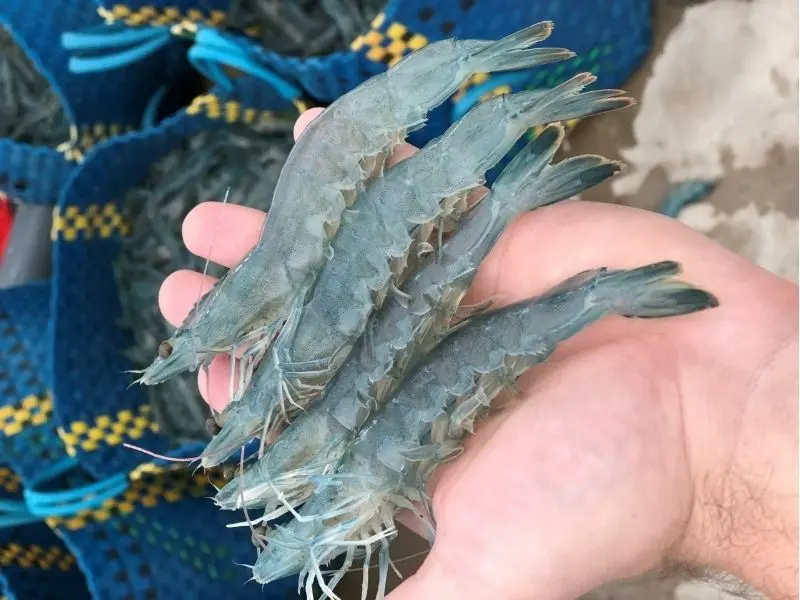
Shrimp Life Cycle
What Factors Affect Shrimp Growth?
Achieving optimal shrimp growth depends on several critical factors:
1. Water Quality
Shrimp are best grown in clean, well-oxygenated water. Poor water conditions, such as high ammonia, nitrite, or nitrate levels, low dissolved oxygen, or imbalanced salinity, can stress shrimp and inhibit growth.
2. Stocking Density
Overcrowding can lead to competition for resources like food and space, resulting in stunted growth or higher mortality rates.
3. Nutrition
Prawns need a well-balanced diet high in protein, vitamins, and minerals. Inadequate nutrition can slow growth and reduce shrimp quality.
4. Disease
Bacterial, viral, and parasitic infections are common in shrimp farming and can significantly hinder shrimp growth.
5. Seed Quality
Low-quality shrimp fry often lead to suboptimal growth. Signs of poor fry include deformed bodies, incomplete intestinal tracts, and inactivity.

What Factors Affect Shrimp Growth?
Tips for Accelerating Shrimp Growth
Farmers can improve shrimp growth rates by implementing the following strategies:
1. Ensure Optimal Water Quality
Water quality is the foundation of successful shrimp cultivation. Poor conditions can lead to stress, disease, and stunted growth. Here’s how to maintain optimal water quality:
Key Parameters to Monitor:
- Dissolved Oxygen (DO): Shrimp require a DO level of at least 5 ppm. Below this, they may become lethargic and less likely to feed, slowing their growth. Regular aeration systems, such as paddle wheels or diffusers, can help maintain sufficient DO levels.
- pH Levels: Maintain a pH range of 7.5–8.5. Fluctuations in pH can stress shrimp and disrupt metabolic processes. Use lime (calcium carbonate) to stabilize pH when necessary.
- Ammonia and Nitrite: Even trace amounts of ammonia or nitrite are toxic to shrimp. Use biological filtration systems or probiotics to break down these compounds. Test kits should be used weekly to ensure safety.
- Temperature Control: Shrimp thrive in temperatures between 28°C and 32°C. Sudden drops or rises in temperature can shock the shrimp, hindering growth. Consider shade nets or heating systems to maintain consistency.
- Salinity: Vannamei shrimp can tolerate a wide salinity range (10–35 ppt), but a stable environment is critical. Use salinity meters to ensure proper levels, especially during water exchanges.
Actionable Practices:
- Regularly test water quality and adjust parameters immediately if deviations occur.
- Implement a routine schedule for partial water changes (10–20% weekly) to remove accumulated waste and toxins.
- Use water conditioners or probiotics to enhance microbial balance and maintain water clarity.
2. Provide High-Quality Feed
Nutrition is the cornerstone of shrimp growth. Poor or imbalanced feed can result in undernourished shrimp, leading to longer production cycles and lower yields.
Key Components of Shrimp Feed:
- Protein: Shrimp require 30–40% protein in their diet, which supports muscle development. High-quality fishmeal, soybean meal, or specialized shrimp feed are good sources.
- Vitamins and Minerals: Micronutrients like calcium, phosphorus, and vitamin C enhance shell development and overall immunity.
- Essential Fatty Acids: Omega-3 and Omega-6 fatty acids are crucial for energy and maintaining cellular function.
Feeding Best Practices:
- Feed Frequency: Juvenile shrimp require more frequent feeding (3–5 times daily) to support rapid growth, while adults may need only 2–3 feedings.
- Feed Quantity: Overfeeding leads to waste accumulation, degrading water quality. In contrast, inadequate nutrition results in malnutrition. Adjust the amount based on shrimp size and pond conditions.
- Feed Quality: Ensure feed is fresh and properly stored to avoid mold or nutrient degradation. Conduct periodic feed tests for nutrient composition.
Monitoring Feed Efficiency:
- Watch shrimp eat. Uneaten feed after 30 minutes indicates overfeeding, while excessive scavenging suggests underfeeding. Adjust accordingly.
3. Optimize Feeding Practices
Beyond feed quality, the method and timing of feeding significantly influence shrimp growth.
Why Feeding Practices Matter:
- Poor feeding strategies can result in uneven shrimp sizes, which lowers market value.
- Effective feeding maximizes nutrient uptake, minimizes waste, and promotes uniform growth.
Strategies for Optimization:
- Use Feeding Trays: Place trays in ponds to monitor feed consumption directly. This helps assess how much feed is consumed and reduces wastage.
- Auto-Feeders: Automating feeding ensures consistency in quantity and timing, especially in larger farms.
- Time Feeding with Shrimp Activity: Feed shrimp during their active periods, typically early morning and late evening, for better consumption rates.
- Supplement Natural Feed: Encourage the growth of natural feed like plankton and algae in ponds, which provide additional nutrients and improve feed conversion rates.
4. Maintain the environmental setpoint
The environment plays a critical role in shrimp health and growth. Stressful conditions can suppress their immune system and lower metabolic rates.
Key Considerations for Shrimp Farm Environmental Impact:
- Temperature Stability: Avoid fluctuations by insulating ponds or using temperature-regulating equipment.
- Pond Depth: Maintain a consistent water depth (1–1.5 meters) to minimize temperature variability and create a stable habitat.
- Sediment Management: Accumulated waste at the pond bottom can release harmful gases like hydrogen sulfide. Regularly siphon sediments to maintain a clean environment.
- Light and Shading: Too much sunlight can overheat ponds, while insufficient light can disrupt shrimp behavior. Use nets or partial shading for balance.
Preventing Stress:
- Avoid sudden environmental changes, such as large water exchanges or rapid salinity shifts.
- Monitor pond parameters daily and take corrective actions immediately when abnormalities are detected.
5. Engage in proper cultivation procedures
A well-managed shrimp farm is the key to achieving fast and healthy growth rates.
Fundamental Farming Practices:
- Regular Water Changes: Replace 10–20% of pond water weekly to remove toxins and replenish essential minerals.
- Disease Management: Use disease-free seeds and implement biosecurity measures to prevent the introduction of pathogens. Conduct regular health checks for early detection of infections.
- Pond Aeration: Ensure proper aeration throughout the pond to prevent oxygen-deprived zones, especially at night when oxygen levels naturally drop.
- Probiotic Use: Add probiotics to control harmful bacteria and enhance beneficial microbial populations in the pond.
Monitoring and Record Keeping:
- Keep detailed records of growth rates, feed consumption, water quality, and any disease occurrences.
- Use these records to identify trends and make data-driven decisions for farm management.
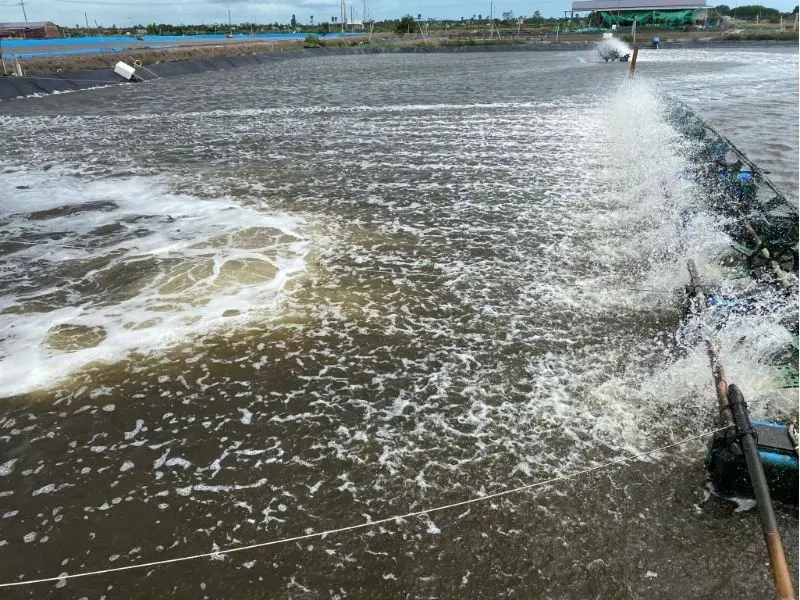
Tips for Accelerating Shrimp Growth
Understanding Shrimp Growth Stages
Shrimp growth rates vary significantly across their life cycle. For instance, juveniles grow rapidly compared to sub-adults and adults. Tracking shrimp growth stages with a shrimp growth chart can help farmers predict harvest timelines and make data-driven decisions to optimize production.
Conclusion
Understanding shrimp growth and addressing the factors affecting development are crucial for successful cultivation. By implementing effective management practices and leveraging modern tools, farmers can significantly enhance shrimp growth rates. Whether you’re farming vannamei shrimp or another species, these tips and insights will help you optimize shrimp farming for profitability and sustainability.
Related Articles
Why Minerals Are Crucial for Shrimp Health
Minerals are indispensable for maintaining the overall health of shrimp. These tiny crustaceans, ...
What Happens When a Shrimp Molts?
Shrimp molting is a critical process in the life cycle of shrimp, where they shed their old ...
How Can We Make Shrimp Farming More Sustainable?
The shrimp farming industry in Vietnam has emerged as a cornerstone of the nation's aquaculture ...
Discover the Hidden Health Benefits of Shrimp
Shrimp is more than just a versatile and delicious seafood; it’s a nutrient-packed option that ...
What Are Pond Nutrients and Why Do They Matter?
Pond nutrients are a vital element of aquatic ecosystems, providing the essential "fuel" for plant ...
What is the Perfect Salinity for My Aquarium?
Maintaining proper salinity in aquariums is crucial for the health and well-being of your aquatic ...

